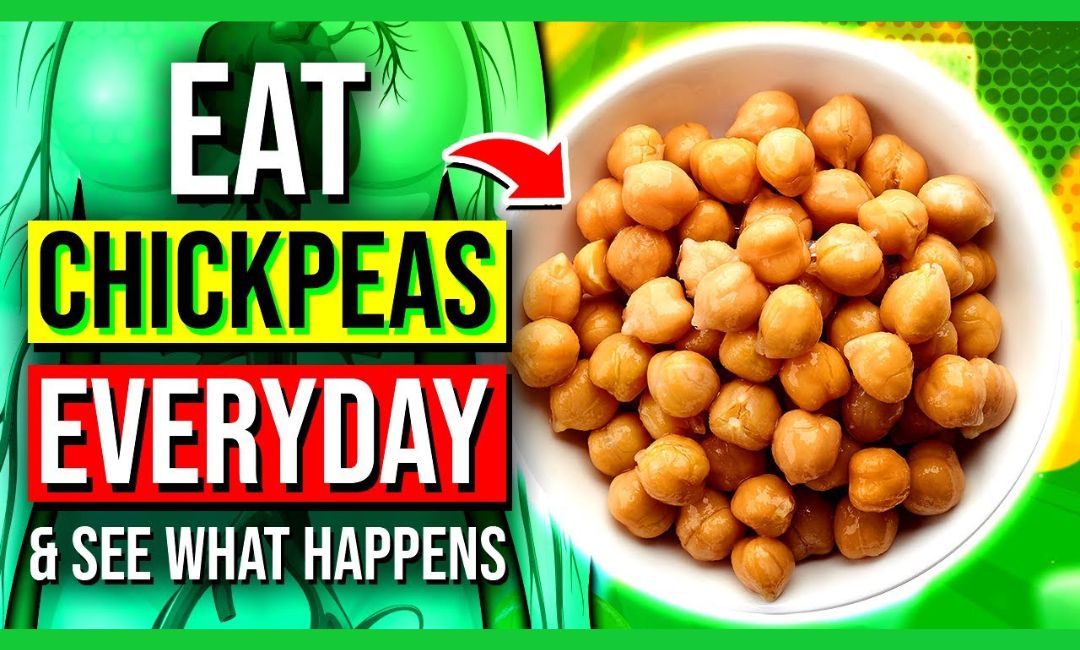Wholesome nourishing foods often trigger which thoughts in your mind? Fresh fruits? Leafy greens? What about chickpeas? Although they might not typically stand in the spotlight of meals, chickpeas earn excellent recognition for their nutritional greatness. The health benefits of chickpeas are remarkable, as they represent one of the most nutritionally dense foods available in your dietary choices because they pack protein with fiber content and provide essential minerals and vitamins too. For more insights on incorporating nutrient-rich foods like chickpeas into your healthy eating habits, visit Nutrition & Healthy Eating – Fruit & Vegetables.
Let us take an extensive look at chickpeas starting from their nutritional content through a historic perspective and the benefits they offer alongside various meal options for everyday consumption.
What Are Chickpeas?
Human culture throughout the world has celebrated chickpeas or garbanzo beans as its oldest legume species since antiquity. Scientists discovered these legumes in the Middle Eastern regions about 7000 years ago when the local population started cultivating them. Chickpeas hold their status as a top food ingredient since they work exceptionally well as components in various dishes like salads, stews, dips, and baked snacks.
The market offers two distinguishable types of chickpeas.
- The Indian growing regions are the natural habitat for the small, dark-colored Desi variety of chickpeas.
- Kabuli chickpeas: Larger, lighter in color, and more common in Europe and the Americas.
Chickpeas Nutrition Profile
Let’s talk numbers! Here’s the nutritional breakdown for 1 cup of cooked chickpeas (about 164 grams) (USDA):
| Nutrient | Amount |
| Calories | 269 kcal |
| Protein | 14.5 g |
| Fat | 4.2 g |
| Carbohydrates | 45 g |
| Fiber | 12.5 g |
| Sugar | 8 g |
| Iron | 4.7 mg (26% DV) |
| Magnesium | 78 mg (20% DV) |
| Potassium | 477 mg (14% DV) |
| Folate (Vitamin B9) | 282 mcg (71% DV) |
DV = Daily Value
As you can see, chickpeas are rich in protein, fiber, iron, and folate nutrients that are essential for energy, blood health, digestion, and more! For personalized nutrition advice and health guidance, consider requesting a free consultation.
Health Benefits of Chickpeas
Chickpeas added to any meal enhance flavor, but they deliver substantial health advantages that make them a perfect food choice. Let’s check out the big ones:
1. A Plant-Based Protein Superstar
The vegetarians or vegans, and those who want to decrease their meat consumption, find chickpeas to be their essential dietary component. Each serving of chickpeas contains approximately 15 grams of protein capable of supporting muscle development as well as tissue healing and prolonged satisfying feelings.
2. Great for Your Heart
The high soluble fiber amounts in chickpeas work to decrease harmful LDL cholesterol levels in the body. The Journal of Nutrition reports that routine consumption of chickpeas leads to decreased heart disease risks.
3. Supports Blood Sugar Control
The low glycemic index value, together with the high fiber content in chickpeas, stops your blood sugar from rapidly rising after eating meals.
People with diabetes, together with individuals who want stable energy, can benefit from eating them.
4. A Friend to Your Digestive System
The dietary fiber in chickpeas reaches 12 grams in each serving, so these legumes promote beneficial gut functions. As part of your daily diet, chickpeas help digestion flow without interruption while nourishing beneficial intestinal bacteria. For personalized health tools, consider using the BMI Calculator, Ideal Body Weight Calculator, and Water Intake Calculator to support your wellness journey.
5. Rich in Important Vitamins and Minerals
- The nutrient content in chickpeas offers individuals a comprehensive amount of:
- Folate enables DNA generation while being especially significant for pregnant women.
- Your bloodstream relies on iron to carry oxygen because this mineral enables oxygen transport.
- Massive amounts of magnesium in chickpeas aid in controlling nerve system responses and muscle activities.
- They serve as delightful natural dietary supplements comparable to a multi-vitamin.
Fun Fact: Chickpeas Are Ancient!
- Human consumption of chickpeas extends back thousands of years.
- These legumes received adoration from both the ancient Egyptian population and the Greek and Roman communities.
- Aristotle recorded two uses of chickpeas by recommending their kitchen and medical values.
- The Egyptian population during the 13th century made hummus a distinguished chickpea dish.
- The global culinary world includes chickpeas in various wellness-focused cuisines such as Indian chana masala and Mediterranean falafel, together with several others.
How to Add Chickpeas to Your Diet?
The best part about chickpeas? They’re incredibly versatile. The introduction of chickpeas into your daily diet becomes much simpler through these mouthwatering preparation methods.
1. Toss Them Into Salads
Cooked chickpeas provide both protein and fiber when added as a handful to any salad.
2. Make Classic Hummus
Chickpea paste obtained by blending the beans with tahini and olive oil and garlic, and lemon juice creates a nutritious dip with creamy consistency.
3. Bake until a crispy texture is achieved
- Cumin together with paprika, and chili powder can season chickpeas until they become crunchy through roasting.
- Cooked chickpeas present themselves as an addictively tasty, nutritious snack option that everyone can enjoy.
4. Stew or Soup Preparation with Chickpeas
Chickpeas create thickening elegance in soups and stews while avoiding dense heaviness in the dish.
5. Bake with Chickpea Flour
- Chickpea flour, known as besan, provides gluten-free protein in addition to its substantial amount of protein content.
- Chickpea flour serves as an ideal ingredient to develop savory breads and pancakes, and brownies.
Are there any Side effects?
Several minor points must be considered when using chickpeas for cooking purposes.
- Consuming chickpeas might lead to digestive issues, such as gas to their oligosaccharide content, which functions as a type of fiber.
- Concentrating your tolerance to chickpeas requires an overnight soak of dry grains followed by complete cooking of the beans.
- Some individuals suffer from allergies to chickpeas, particularly when their bodies also react to peanut substances.
- Keeping portions reasonable applies to all foods just the same.
- Consuming large quantities of chickpeas, especially if your system lacks fiber, experience result in digestive problems.
Quick Chickpea Recipe: 5-Minute Salad
Ingredients:
- 1 can of chickpeas, drained and rinsed
- 1 diced cucumber
- 10 cherry tomatoes, halved
- 2 tablespoons olive oil
- 1 tablespoon lemon juice
- Additionally, sprinkle parsley and stir in salt and peppercorns as needed
Instructions:
- Mix everything in a bowl.
- Serve chilled!
- No matter how quickly you prepare them, you get a refreshing, low-calorie, nutritious salad featuring protein and fiber.
Conclusion
Each pantry keeps chickpeas as a minimal yet powerful nutritional food component that maximizes health benefits. Each portion of beans contains protein together with essential vitamins, minerals, and dietary fiber. Black cow peas serve useful functions in kitchens because they have an inexpensive price structure and versatile uses, and a fast, simple preparation process. For more on nutrient-dense foods, visit Potato Nutrition Benefits.
Consuming chickpeas through hummus blending, roasting them into snacks, or incorporating them into stew always benefits your health. Always include chickpeas when planning your meals because they pack many health benefits. Your taste buds, together with your body system, will benefit from these food choices. For more information, visit Bear Goal.






